SWRA705 August 2021 AWR1243 , AWR1443 , AWR1642 , AWR1843 , AWR1843AOP , AWR2243 , AWR2944 , AWR6443 , AWR6843 , AWR6843AOP , AWRL1432 , AWRL6432 , IWR1443 , IWR1642 , IWR1843 , IWR2243 , IWR6243 , IWR6443 , IWR6843 , IWR6843AOP , IWRL6432 , IWRL6432AOP
5 Radome Design and Simulations
This section highlights some radome designs and simulations performed with the IWR6843 ISK style antenna using a spherical radome as a case study. In this section, far-field antenna radiation patterns with and without radome are compared. For this simulation, a derivative of the IWR6843 ISK EVM design is being used.
Figure 5-1 through Figure 5-4 show the pictures of the radome simulations in a 3D EM field solver tool such as the HFSS from Ansys.
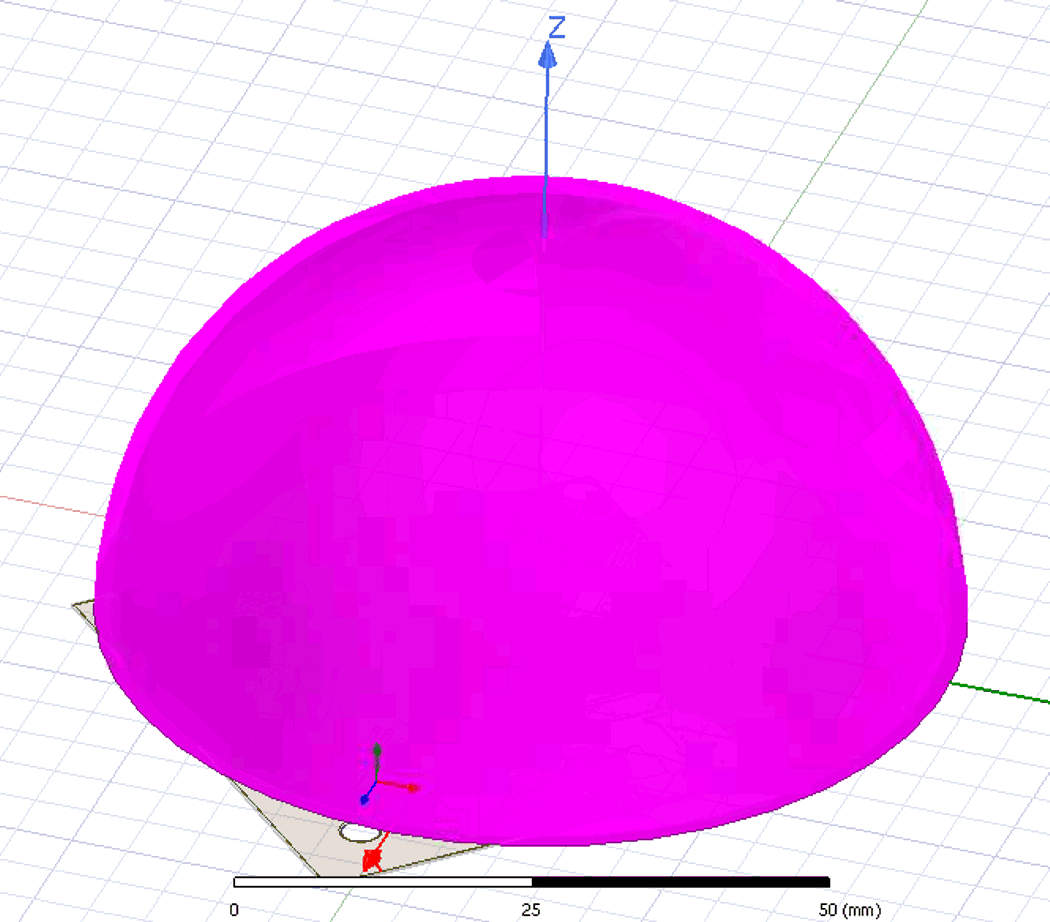 Figure 5-1 Spherical Radome HFSS
Model: 37.44 mm outer radius
Figure 5-1 Spherical Radome HFSS
Model: 37.44 mm outer radius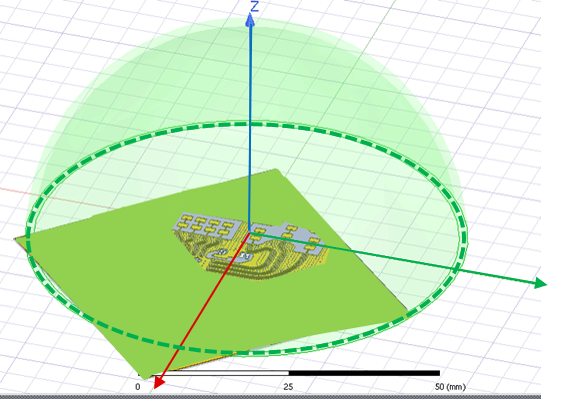 Figure 5-3 Smaller Spherical HFSS
Model: Corresponding Dimensions and Placement With Semi-Transparent View of
PCB
Figure 5-3 Smaller Spherical HFSS
Model: Corresponding Dimensions and Placement With Semi-Transparent View of
PCB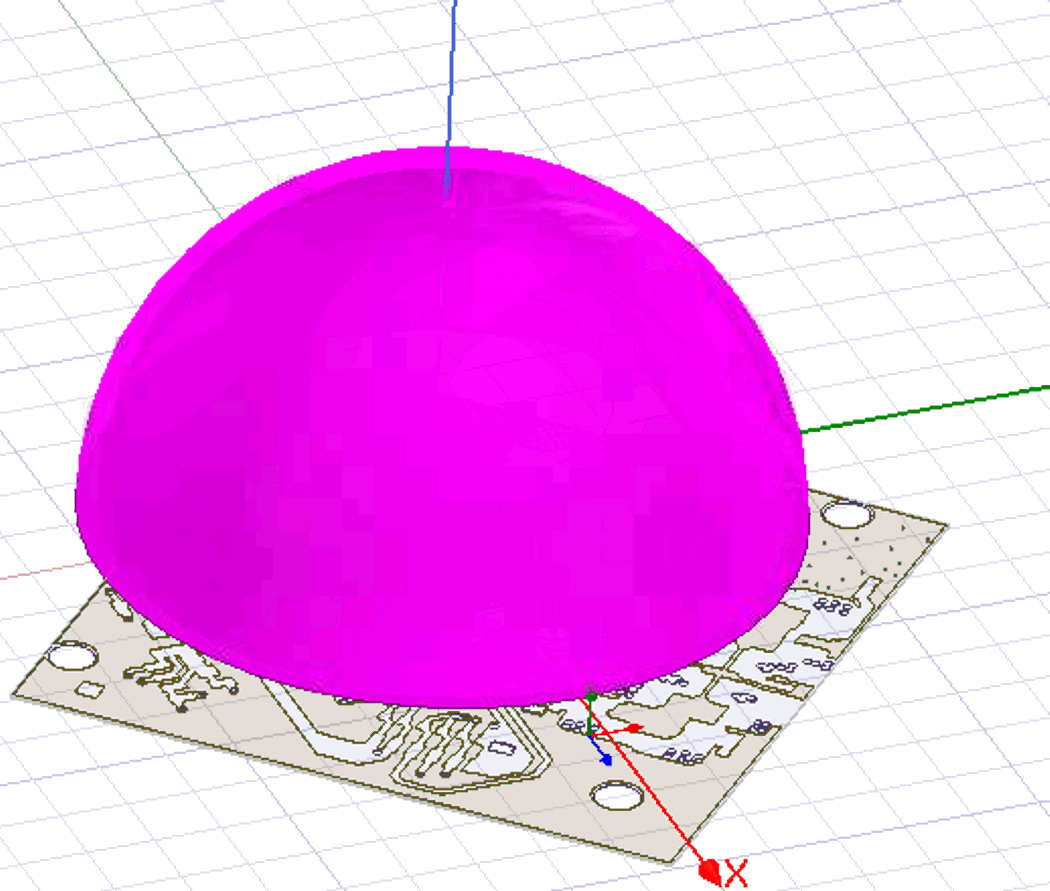 Figure 5-2 Spherical Radome HFSS
Model: 18.24 mm Outer Radius
Figure 5-2 Spherical Radome HFSS
Model: 18.24 mm Outer Radius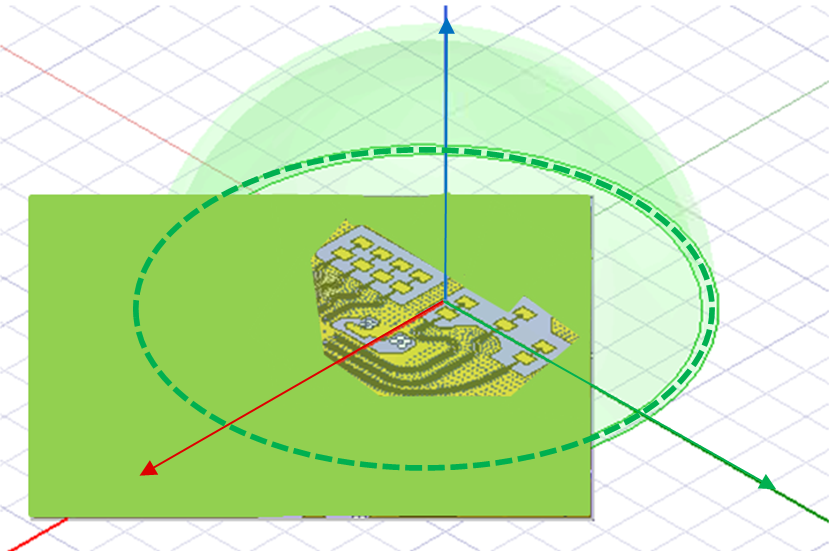 Figure 5-4 Larger Spherical HFSS
Model: Corresponding Dimensions and Placement With Semi-Transparent View of
PCB
Figure 5-4 Larger Spherical HFSS
Model: Corresponding Dimensions and Placement With Semi-Transparent View of
PCBFigure 5-5 shows the spherical radome design with radius selected based on the antenna aperture size and desired field of view requirements. In this case, the design is optimized for a ±70 degree Azimuth and ±40° elevation field of view. The radius of curvature selected is optimized for an integer multiple of λ0/2. For analysis purposes, ABS-HG_FR material is used with Dk of 2.8 and Df of 7.90E-03.
 Figure 5-5 Radome Radius of Curvature is
Based on Antenna Aperture and FoV Requirement
Figure 5-5 Radome Radius of Curvature is
Based on Antenna Aperture and FoV RequirementThe following images show simulated antenna radiation patterns for various outer radius integer multiples of λ0/2 (18.24 mm, 31.2 mm, 37.44 mm) with the optimal thickness in comparison to the no radome pattern. For the TX images, the three transmitters of the IWR6843 are shown, and similarly for the RX images, the four receivers are shown in different colors. Both the azimuth and elevation aspects are analyzed in the comparison. Based on the ripples seen in the antenna patterns and antenna gains at the edge of the FoV, the 31.2 mm radius seems to be optimal for this design. Approximately 2-3 dB of two-way loss could be expected and needs to be accounted for in the system link budget analysis.
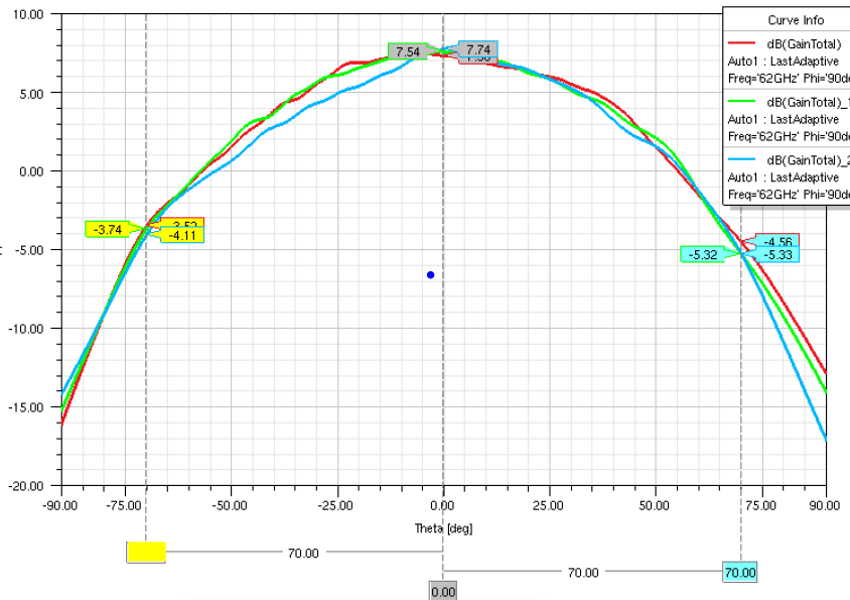 Figure 5-6 Radiation Pattern Tx. Azimuth
Without Radome
Figure 5-6 Radiation Pattern Tx. Azimuth
Without Radome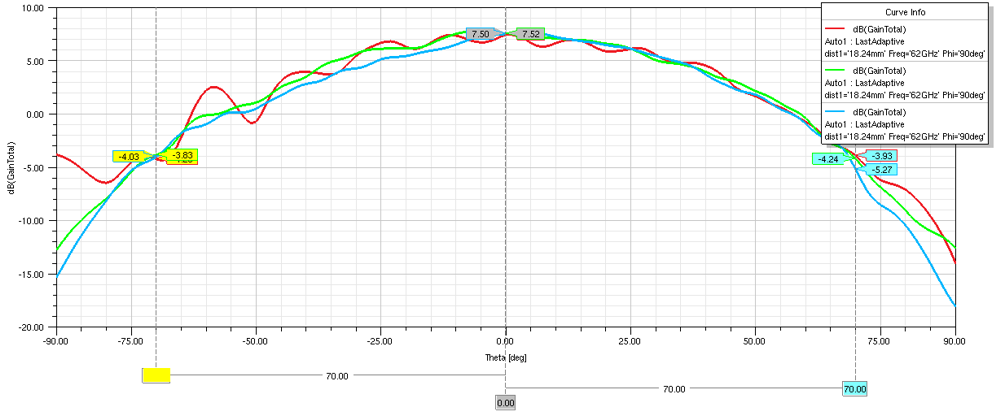 Figure 5-7 Radiation Pattern Tx Azimuth
With Radome Radius 18.24 mm
Figure 5-7 Radiation Pattern Tx Azimuth
With Radome Radius 18.24 mm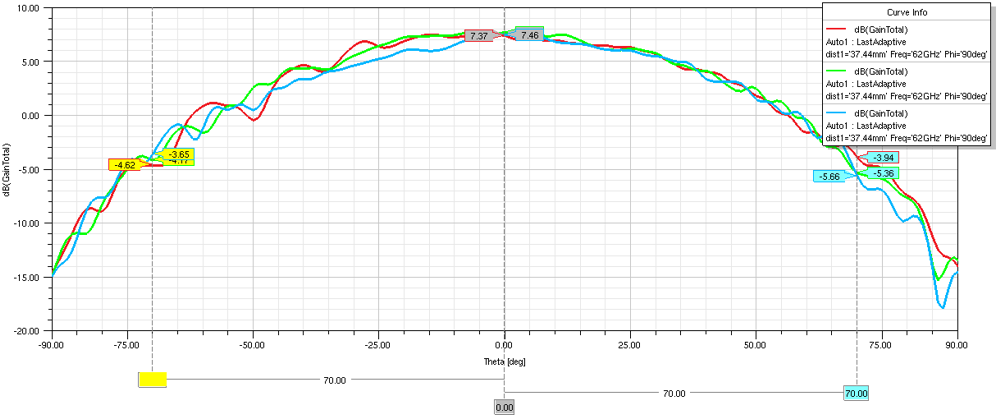 Figure 5-8 Radiation Pattern Tx Azimuth
With Radome Radius 37.44 mm
Figure 5-8 Radiation Pattern Tx Azimuth
With Radome Radius 37.44 mm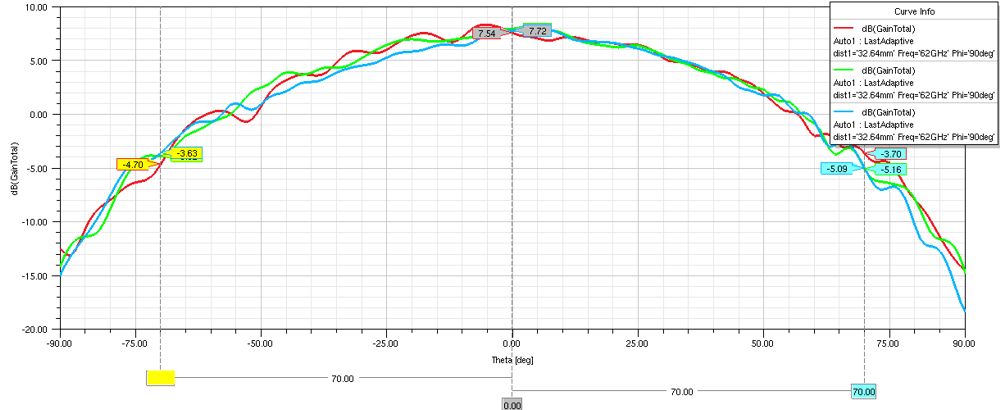 Figure 5-9 Radiation Pattern Tx Azimuth
With Radome Radius 32.64 mm
Figure 5-9 Radiation Pattern Tx Azimuth
With Radome Radius 32.64 mm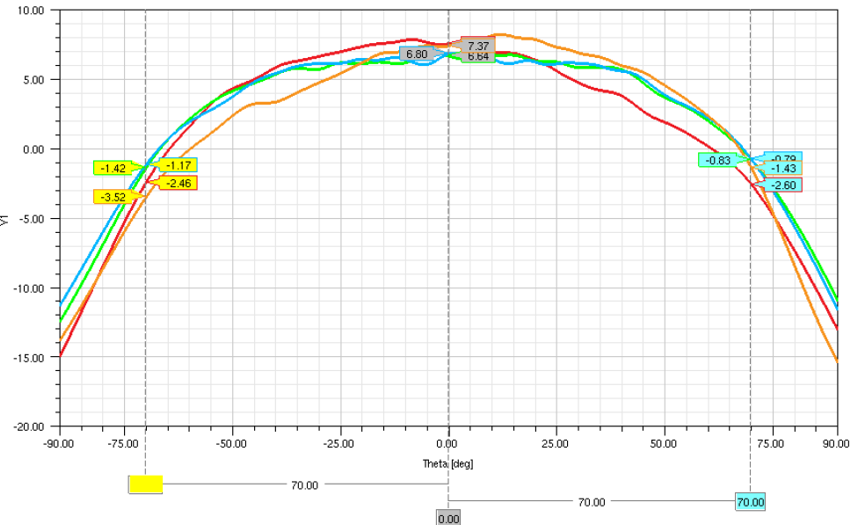 Figure 5-10 Radiation Pattern Rx Azimuth
Without Radome
Figure 5-10 Radiation Pattern Rx Azimuth
Without Radome 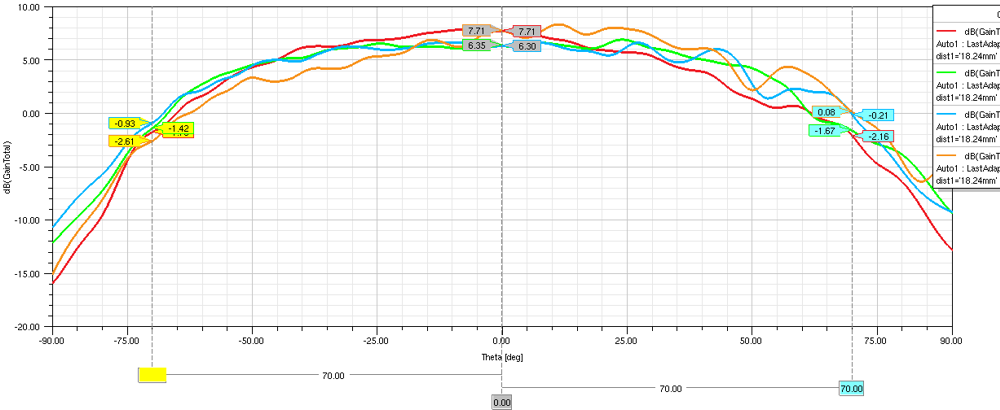 Figure 5-11 Radiation Pattern Rx Azimuth
With Radome Radius 18.24 mm
Figure 5-11 Radiation Pattern Rx Azimuth
With Radome Radius 18.24 mm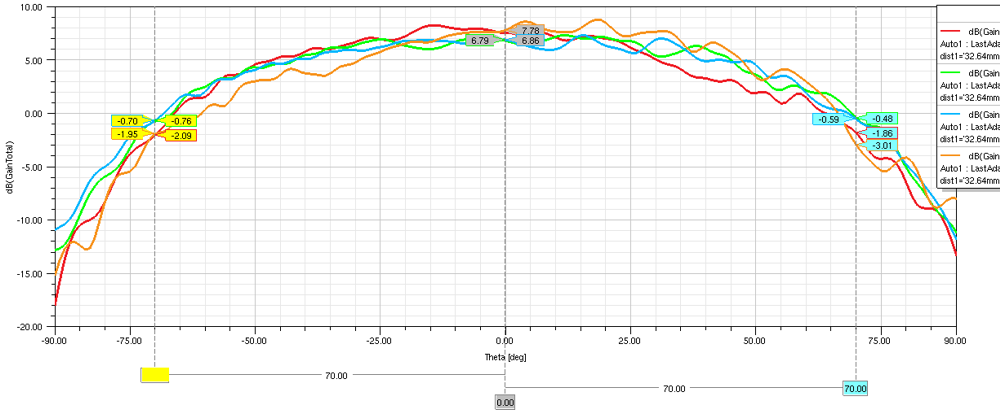 Figure 5-12 Radiation Pattern Rx Azimuth
With Radome Radius 37.44 mm
Figure 5-12 Radiation Pattern Rx Azimuth
With Radome Radius 37.44 mm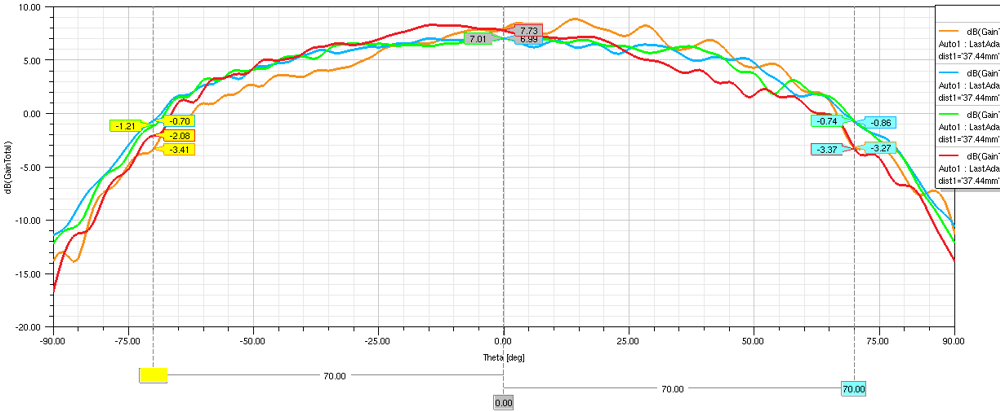 Figure 5-13 Radiation Pattern Rx Azimuth
With Radome Radius 32.64 mm
Figure 5-13 Radiation Pattern Rx Azimuth
With Radome Radius 32.64 mmThe following images show a similar analysis is done for the elevation field of view. For the ±40° elevation field of view, there is minimal ripple impact seen due to radome.
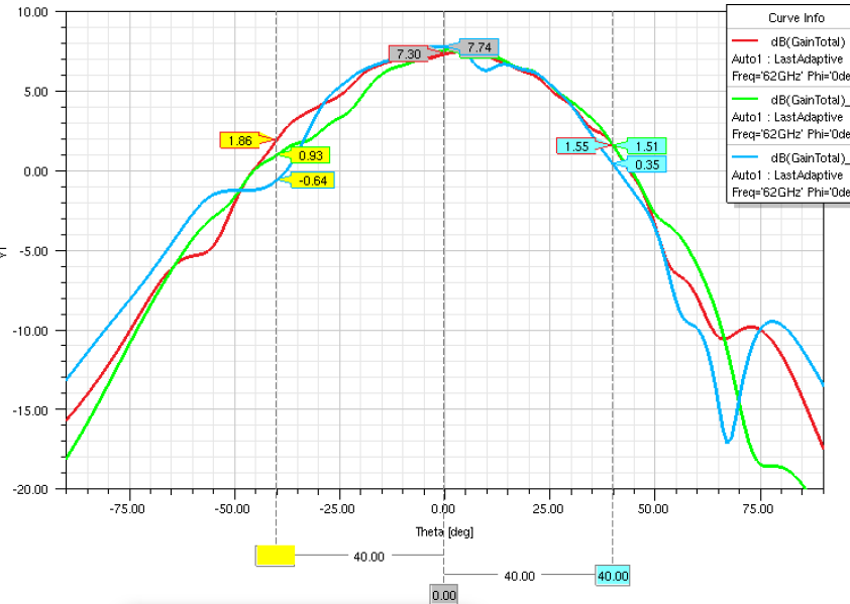 Figure 5-14 Radiation Pattern Tx.
Elevation Without Radome
Figure 5-14 Radiation Pattern Tx.
Elevation Without Radome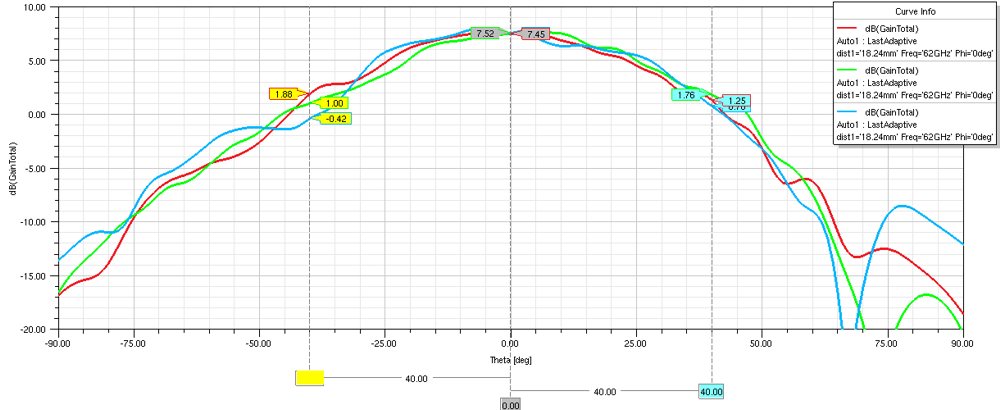 Figure 5-15 Radiation Pattern Tx Elevation
With Radome Radius 18.24 mm
Figure 5-15 Radiation Pattern Tx Elevation
With Radome Radius 18.24 mm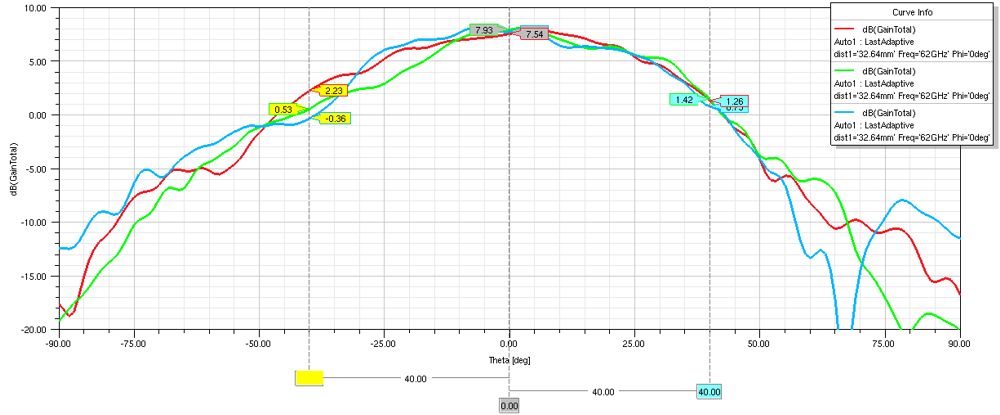 Figure 5-16 Radiation Pattern Tx Elevation
With Radome Radius 37.44 mm
Figure 5-16 Radiation Pattern Tx Elevation
With Radome Radius 37.44 mm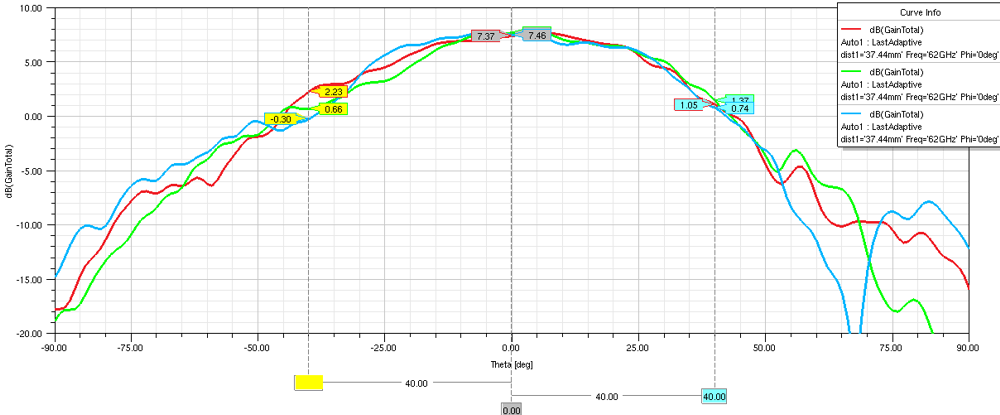 Figure 5-17 Radiation Pattern Tx Elevation
With Radome Radius 32.64 mm
Figure 5-17 Radiation Pattern Tx Elevation
With Radome Radius 32.64 mm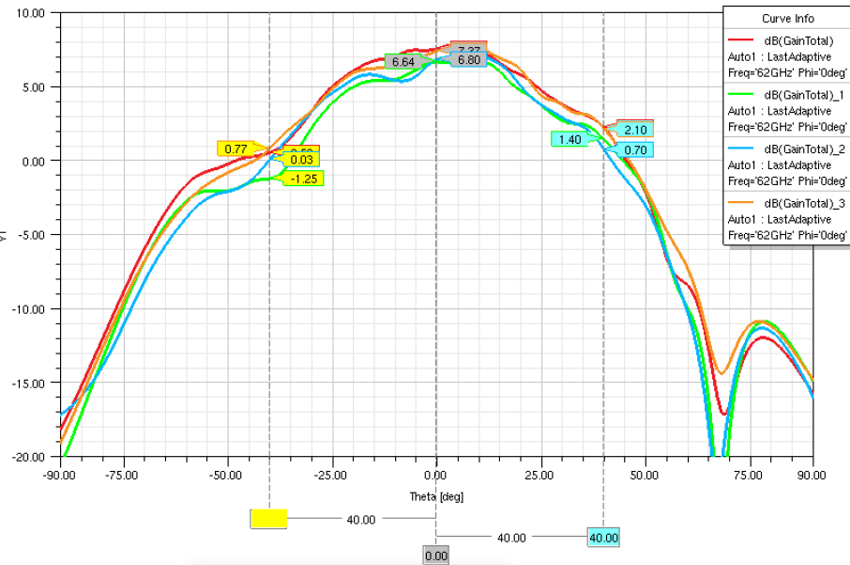 Figure 5-18 Radiation Pattern Rx Elevation
Without Radome
Figure 5-18 Radiation Pattern Rx Elevation
Without Radome 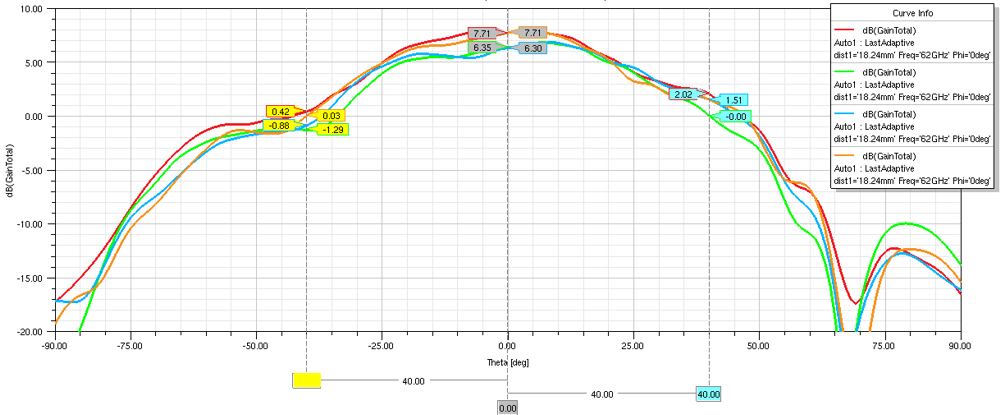 Figure 5-19 Radiation Pattern Rx Elevation
With Radome Radius 18.24 mm
Figure 5-19 Radiation Pattern Rx Elevation
With Radome Radius 18.24 mm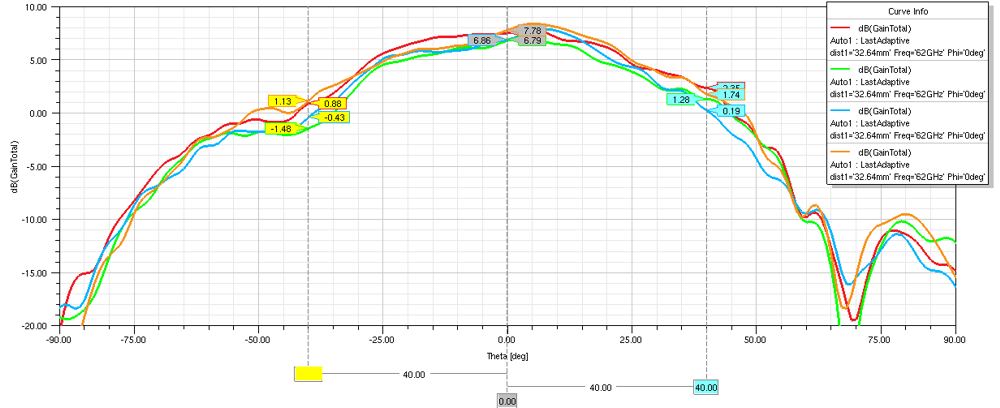 Figure 5-20 Radiation Pattern Rx Elevation
With Radome Radius 37.44 mm
Figure 5-20 Radiation Pattern Rx Elevation
With Radome Radius 37.44 mm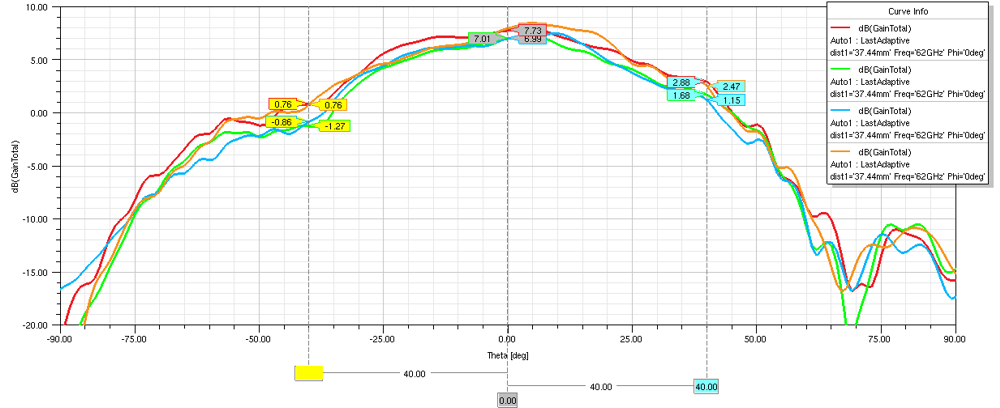 Figure 5-21 Radiation Pattern Rx Elevation
With Radome Radius 32.64 mm
Figure 5-21 Radiation Pattern Rx Elevation
With Radome Radius 32.64 mm